- Welcome to Tech for Techs.
Recent posts
#21
Microsoft Exchange / Change Exchange Virtual Direct...
Last post by Adventech - August 11, 2015, 01:20:54 PMPROBLEM:
Change Exchange Virtual Directory Internal and External URL's.
SOLUTION:
Create PowerShell Script to change the IIS sites.
Note: You will need to make sure you have your external site added to your DNS to point to the local exchange IP.
Change Exchange Virtual Directory Internal and External URL's.
SOLUTION:
Create PowerShell Script to change the IIS sites.
Code Select
#URL.ps1
$urlpath = Read-Host "Type internal Client Access FQDN starting with http:// or https://"
Set-AutodiscoverVirtualDirectory -Identity * –internalurl "$urlpath/autodiscover/autodiscover.xml"
Set-ClientAccessServer –Identity * –AutodiscoverServiceInternalUri "$urlpath/autodiscover/autodiscover.xml"
Set-webservicesvirtualdirectory –Identity * –internalurl "$urlpath/ews/exchange.asmx"
Set-oabvirtualdirectory –Identity * –internalurl "$urlpath/oab"
Set-owavirtualdirectory –Identity * –internalurl "$urlpath/owa"
Set-ecpvirtualdirectory –Identity * –internalurl "$urlpath/ecp"
Set-ActiveSyncVirtualDirectory -Identity * -InternalUrl "$urlpath/Microsoft-Server-ActiveSync"
Set-webservicesvirtualdirectory –Identity * -ExternalUrl "$urlpath/ews/exchange.asmx"
Set-oabvirtualdirectory –Identity * –ExternalUrl "$urlpath/oab"
Set-owavirtualdirectory –Identity * –ExternalUrl "$urlpath/owa"
Set-ecpvirtualdirectory –Identity * –ExternalUrl "$urlpath/ecp"
Set-ActiveSyncVirtualDirectory -Identity * -ExternalUrl "$urlpath/Microsoft-Server-ActiveSync"
#get commands to to doublecheck the config
get-AutodiscoverVirtualDirectory | fl identity,internalurl, externalurl
get-ClientAccessServer | fl identity,AutodiscoverServiceInternalUri
get-webservicesvirtualdirectory | fl identity,internalurl,externalurl
get-oabvirtualdirectory | fl identity,internalurl,externalurl
get-owavirtualdirectory | fl identity,internalurl,externalurl
get-ecpvirtualdirectory | fl identity,internalurl,externalurl
get-ActiveSyncVirtualDirectory | fl identity,internalurl,externalurlNote: You will need to make sure you have your external site added to your DNS to point to the local exchange IP.
#23
Windows 8 & 8.1 / Windows Activation Phone Suppo...
Last post by James - February 16, 2015, 09:03:27 AMFirst Open the Automated Activation Attendant:
Open Run Command: "slui 4"
Contact Phone Support:
Phone Activation #: 866-374-2481
Open Run Command: "slui 4"
Contact Phone Support:
Phone Activation #: 866-374-2481
#24
Quickbooks / How configure SMTP email on Qu...
Last post by Adventech - January 30, 2015, 06:26:37 PMPROBLEM:
QuickBooks does not have outlook as an option for email.
How configure SMTP email on QuickBooks for Microsoft Exchange 2007 / 2010 / 2013?
SOLUTION:
Add a new UPN Suffix to active directory.
To add UPN suffixes:
I.) Open Active Directory Domains and Trusts. ...
II.) In the console tree, right-click Active Directory Domains and Trusts , and then click Properties .
III.) On the UPN Suffixes tab, type an alternative UPN suffix for the forest, and then click Add .
Change the users UPN Suffix in AD Users and Computers
Set up outgoing email (SMTP) in QuickBooks:
1.) If you have the Choose your Email Method message open, click the Setup my email now button.
Choose your email method image
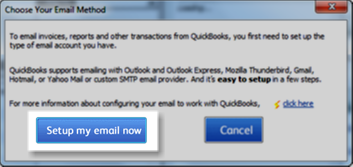
2.) Optional: If you don't have the message open, open preferences by choosing Preferences from the Edit menu.
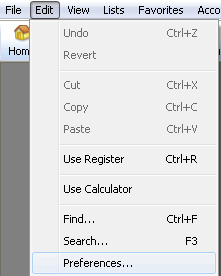
3.) Along the left side of the Preferences window, select Send Forms.
4.) Along the top of the Preferences window, click the My Preferences tab and click Add.
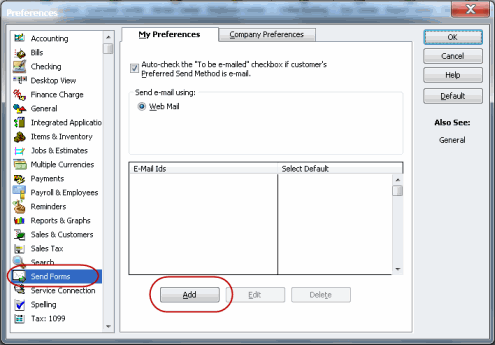
5.) In the Add Email Info window:
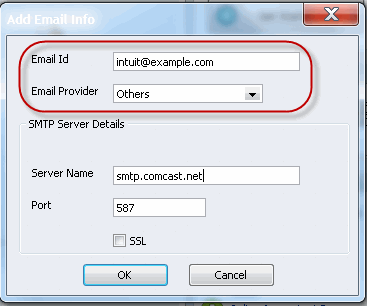
6.) Click OK. Your email account appears in the E-Mail Ids field and is set as the current default.
7.) Click OK.
8.) Email a transaction or report as a test.
Note: You may be required to enter your password one or more times prior to sending forms when you launch QuickBooks or when you launch Windows. For security reasons, QuickBooks cannot store the password to send your email.
QuickBooks does not have outlook as an option for email.
How configure SMTP email on QuickBooks for Microsoft Exchange 2007 / 2010 / 2013?
SOLUTION:
Add a new UPN Suffix to active directory.
To add UPN suffixes:
I.) Open Active Directory Domains and Trusts. ...
II.) In the console tree, right-click Active Directory Domains and Trusts , and then click Properties .
III.) On the UPN Suffixes tab, type an alternative UPN suffix for the forest, and then click Add .
Change the users UPN Suffix in AD Users and Computers
Set up outgoing email (SMTP) in QuickBooks:
1.) If you have the Choose your Email Method message open, click the Setup my email now button.
Choose your email method image

2.) Optional: If you don't have the message open, open preferences by choosing Preferences from the Edit menu.

3.) Along the left side of the Preferences window, select Send Forms.
4.) Along the top of the Preferences window, click the My Preferences tab and click Add.

5.) In the Add Email Info window:

- a.Enter your email address in the Email Id field.
- b.From the Email Provider drop-down list, select Others.
- c.Enter your ISP's mail server name in the Server Name field.
- d.(Optional) If the port number is not 25, enter the correct number.
- e.(Optional) Select the SSL checkbox if your ISP specifies that Secure Socket Layer should be enabled.
6.) Click OK. Your email account appears in the E-Mail Ids field and is set as the current default.
7.) Click OK.
8.) Email a transaction or report as a test.
Note: You may be required to enter your password one or more times prior to sending forms when you launch QuickBooks or when you launch Windows. For security reasons, QuickBooks cannot store the password to send your email.
#25
Zeiss Cirrus HD-OCT / Zeiss Forums Database NIM Erro...
Last post by Adventech - January 30, 2015, 04:26:53 PMNIM -1
NIM -11
- Local Database Error
NIM -11
- DNS look up errors
#26
Windows 2008 & 2008 R2 Server / How to bring online a domain c...
Last post by Adventech - January 11, 2015, 10:13:29 PMPROBLEM:
How to bring online a domain controller (DC) that was offline for an extended amount of time?
ActiveDirectory_DomainService 1865 "The Knowledge Consistency Checker (KCC) was unable to form a complete spanning tree network topology. As a result, the following list of sites cannot be reached from the local site."
ActiveDirectory_Domain_Service 1311 "The Knowledge Consistency Checker (KCC) has detected problems with the following directory partition."
ActiveDirectory_Domain_Service 1566 "All directory servers in the following site that can replicate the directory partition over this transport are currently unavailable."
DNS-Server-Service 4013 "The DNS server is waiting for Active Directory Domain Services (AD DS) to signal that the initial synchronization of the directory has been completed."
Above and beyond these issues using the portqry.exe tool I was able to figure out that the server was not listening on any of the relevant domain controller ports, TCP 137-139 or UDP port 53.
TROUBLE SHOOTING
SOLUTION:
1.) Open "Sites and Services", and move the problem DC into a site with a working DC.
2.) Open an Administrative Command Prompt (CMD running as Admin).
3.) Run the following commands.
How to bring online a domain controller (DC) that was offline for an extended amount of time?
ActiveDirectory_DomainService 1865 "The Knowledge Consistency Checker (KCC) was unable to form a complete spanning tree network topology. As a result, the following list of sites cannot be reached from the local site."
ActiveDirectory_Domain_Service 1311 "The Knowledge Consistency Checker (KCC) has detected problems with the following directory partition."
ActiveDirectory_Domain_Service 1566 "All directory servers in the following site that can replicate the directory partition over this transport are currently unavailable."
DNS-Server-Service 4013 "The DNS server is waiting for Active Directory Domain Services (AD DS) to signal that the initial synchronization of the directory has been completed."
Above and beyond these issues using the portqry.exe tool I was able to figure out that the server was not listening on any of the relevant domain controller ports, TCP 137-139 or UDP port 53.
TROUBLE SHOOTING
Code Select
Repadmin /syncall /AdePq- Performs a synchronization for a server with all of its replication partners, the modifiers help in performing the sync in a multisite environment
Code Select
Repadmin /replsum- Summarizes the state of replication of the forest
Code Select
Repadmin /kcc *- Forces a recalculation of the topology, has the effect of rebuilding the automatically created partner connections in Sites and Services
Code Select
Dcdiag /test:Connectivity- dcdiag over all is great, but using the /test modifier you are able to run only specific tests as needed
SOLUTION:
1.) Open "Sites and Services", and move the problem DC into a site with a working DC.
2.) Open an Administrative Command Prompt (CMD running as Admin).
3.) Run the following commands.
Code Select
repadmin /kcc *Code Select
repadmin /syncall. #27
PIX 500 Series / How to configure PPTP pass-thr...
Last post by Adventech - December 31, 2014, 10:29:00 AMPROBLEM:
How to configure PPTP pass-through on Cisco PIX 501 / 515 /525 / Cisco ASA 5505 / 5510 / 5515?
Allow GRE outbound on Cisco PIX or ASA
SOLUTION:
Add a fixup protocol.
GRE will be dynamically permitted.
How to configure PPTP pass-through on Cisco PIX 501 / 515 /525 / Cisco ASA 5505 / 5510 / 5515?
Allow GRE outbound on Cisco PIX or ASA
SOLUTION:
Add a fixup protocol.
Code Select
fixup protocol pptp 1723GRE will be dynamically permitted.
#28
2010 / Exchange 2010 fails to export ...
Last post by Adventech - December 23, 2014, 04:27:56 PMPROBLEM:
Exchange 2010 fails to export large mailboxes to PST.
How to export mail boxes to PST in Microsoft Exchange 2010?
How to use MailboxExportRequest in Exchange 2010?
SOLUTION:
The simplest way to export mail boxes to PST is to us power shell. Before you begin you will need to create a network share on either the exchange server or another location and give read/write permission for "Exchange Trust Subsystems" group.
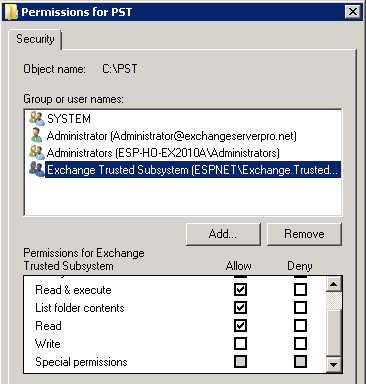
After that you are ready to export. The following commands will help you with exporting and monitoring the export.
Export Mailbox
View the status of the request
View the status with more details
View the status of all requests
Export Archive Mailbox
Complete and Remove all requests
TROUBLE SHOOTING
Error: The term "New-MailboxExportRequest" is not recognized.
(replace "DOMAIN" with your domain and "USER" with Domain Admin User)
Restart PowerShell after adding the role!
Large Mailboxes Failing? add -MRSServer exchange-server-name.domain.local or the CAS server name (see below).
Exchange 2010 fails to export large mailboxes to PST.
How to export mail boxes to PST in Microsoft Exchange 2010?
How to use MailboxExportRequest in Exchange 2010?
SOLUTION:
The simplest way to export mail boxes to PST is to us power shell. Before you begin you will need to create a network share on either the exchange server or another location and give read/write permission for "Exchange Trust Subsystems" group.

After that you are ready to export. The following commands will help you with exporting and monitoring the export.
Export Mailbox
Code Select
New-MailboxExportRequest -Mailbox john.doe -FilePath \\EXCHANGESERVER\pst\john.doe.pstView the status of the request
Code Select
Get-MailboxExportRequestView the status with more details
Code Select
Get-MailboxExportRequest -Name MailboxExport | flView the status of all requests
Code Select
Get-MailboxExportRequest | Get-MailboxExportRequestStatisticsExport Archive Mailbox
Code Select
New-MailboxExportRequest -Mailbox john.doe -FilePath \\EXCHANGESERVER\pst\john.doe.pst -IsArchiveComplete and Remove all requests
Code Select
Get-MailboxExportRequest | where {$_.status -eq "Completed"} | Remove-MailboxExportRequestTROUBLE SHOOTING
Error: The term "New-MailboxExportRequest" is not recognized.
Code Select
New-ManagementRoleAssignment –Role "Mailbox Import Export" –User "DOMAIN\USER"(replace "DOMAIN" with your domain and "USER" with Domain Admin User)
Restart PowerShell after adding the role!
Large Mailboxes Failing? add -MRSServer exchange-server-name.domain.local or the CAS server name (see below).
Code Select
New-MailboxExportRequest -Mailbox john.doe -FilePath \\EXCHANGESERVER\pst\john.doe.pst -MRSServer exchange-server-name.domain.local #29
2008 / 2008 R2 / How To Change DPI Settings in ...
Last post by Adventech - December 18, 2014, 12:25:59 AMPROBLEM:
How To Change DPI Settings in a Remote Desktop Session on Windows 7 or Server 2008 R2?
SOLUTIONS:
To fix this, you will need a Hotfix from Microsoft. You can download it from this Microsoft KB article.
How To Change DPI Settings in a Remote Desktop Session on Windows 7 or Server 2008 R2?
SOLUTIONS:
To fix this, you will need a Hotfix from Microsoft. You can download it from this Microsoft KB article.
#30
Windows SBS 2011 / Limit Memory Usage on Microsof...
Last post by Adventech - December 18, 2014, 12:09:23 AMPROBLEM:
How to Limit Memory Usage from Exchange and SQL on Microsoft Small Business Server 2008 / 2011?
How to limit Exchange 2010 memory usage?
How to limit SQL Server 2005/2008 memory usage?
SOLUTION:
EXCHANGE SERVER (Part 1)
1.)Open ADSIedit by navigating to Start > All Programs > Administrative Tools > ADSI Edit.
2.) Right click the root of the tree and select "Connect To"
3.) Under "Connection Point" > Select a well known Naming Context > Select, "Configuration"
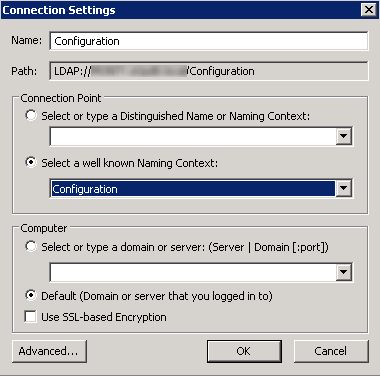
4.) Click OK.
5.) Once connected to the Configuration Naming Context, navigate to the following item:
Configuration -> Services -> Microsoft Exchange -> "Organization Name" -> Administrative Groups > "Administrative Group" -> Servers -> "Server Name" -> InformationStore
6.) Right click Information Store and choose properties.
7.) Scroll down to msExchESEParamCacheSizeMin attribute and set the value according to your requirements.
8.) Scroll down to msExchESEParamCacheSizeMax attribute and set the value according to your requirements.
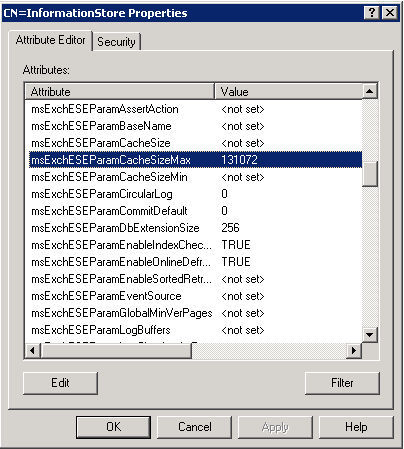
9.) Restart Exchange Information Store Service.
NOTE: Exchange 2007 works with 8kB pages and Exchange 2010 works with 32kB pages.
So if you want to limit the size of memory used to 4GB, you will need the following calculations:
Exchange 2007: 4 GB = 4.194.304 KB / 8 KB => 524288
Exchange 2010: 4 GB = 4.194.304 KB / 32 KB => 131072
EXAMPLES:
Exchange 2010:
Min – 1GB: msExchESEParamCacheSizeMin = 32768
Max – 4GB: msExchESEParamCacheSizeMax = 131072
other - 512MB: = 16384
Exchange 2007:
Min – 1GB: msExchESEParamCacheSizeMin = 131072
Max – 4GB: msExchESEParamCacheSizeMax = 524288
other - 512MB = 65536
SQL SERVER (Part 2)
1.) Open "SQL Server Management Studio". Note: Right Click and Run-as Administrator.
2.) Login to the following instances.
3.) Right click on the root and choose properties.
4.) Under "Memory" change the Maximum Server Memory to desired amount.
5.) Restart SQL services.
How to Limit Memory Usage from Exchange and SQL on Microsoft Small Business Server 2008 / 2011?
How to limit Exchange 2010 memory usage?
How to limit SQL Server 2005/2008 memory usage?
SOLUTION:
EXCHANGE SERVER (Part 1)
1.)Open ADSIedit by navigating to Start > All Programs > Administrative Tools > ADSI Edit.
2.) Right click the root of the tree and select "Connect To"
3.) Under "Connection Point" > Select a well known Naming Context > Select, "Configuration"

4.) Click OK.
5.) Once connected to the Configuration Naming Context, navigate to the following item:
Configuration -> Services -> Microsoft Exchange -> "Organization Name" -> Administrative Groups > "Administrative Group" -> Servers -> "Server Name" -> InformationStore
6.) Right click Information Store and choose properties.
7.) Scroll down to msExchESEParamCacheSizeMin attribute and set the value according to your requirements.
8.) Scroll down to msExchESEParamCacheSizeMax attribute and set the value according to your requirements.

9.) Restart Exchange Information Store Service.
NOTE: Exchange 2007 works with 8kB pages and Exchange 2010 works with 32kB pages.
So if you want to limit the size of memory used to 4GB, you will need the following calculations:
Exchange 2007: 4 GB = 4.194.304 KB / 8 KB => 524288
Exchange 2010: 4 GB = 4.194.304 KB / 32 KB => 131072
EXAMPLES:
Exchange 2010:
Min – 1GB: msExchESEParamCacheSizeMin = 32768
Max – 4GB: msExchESEParamCacheSizeMax = 131072
other - 512MB: = 16384
Exchange 2007:
Min – 1GB: msExchESEParamCacheSizeMin = 131072
Max – 4GB: msExchESEParamCacheSizeMax = 524288
other - 512MB = 65536
SQL SERVER (Part 2)
1.) Open "SQL Server Management Studio". Note: Right Click and Run-as Administrator.
2.) Login to the following instances.
- <SERVERNAME>\SBSMONITORING
- <SERVERNAME>\SHAREPOINT
- <SERVERNAME>\MICROSOFT##SSEE
Code Select
\\.\pipe\mssql$microsoft##ssee\sql\query3.) Right click on the root and choose properties.
4.) Under "Memory" change the Maximum Server Memory to desired amount.
5.) Restart SQL services.
